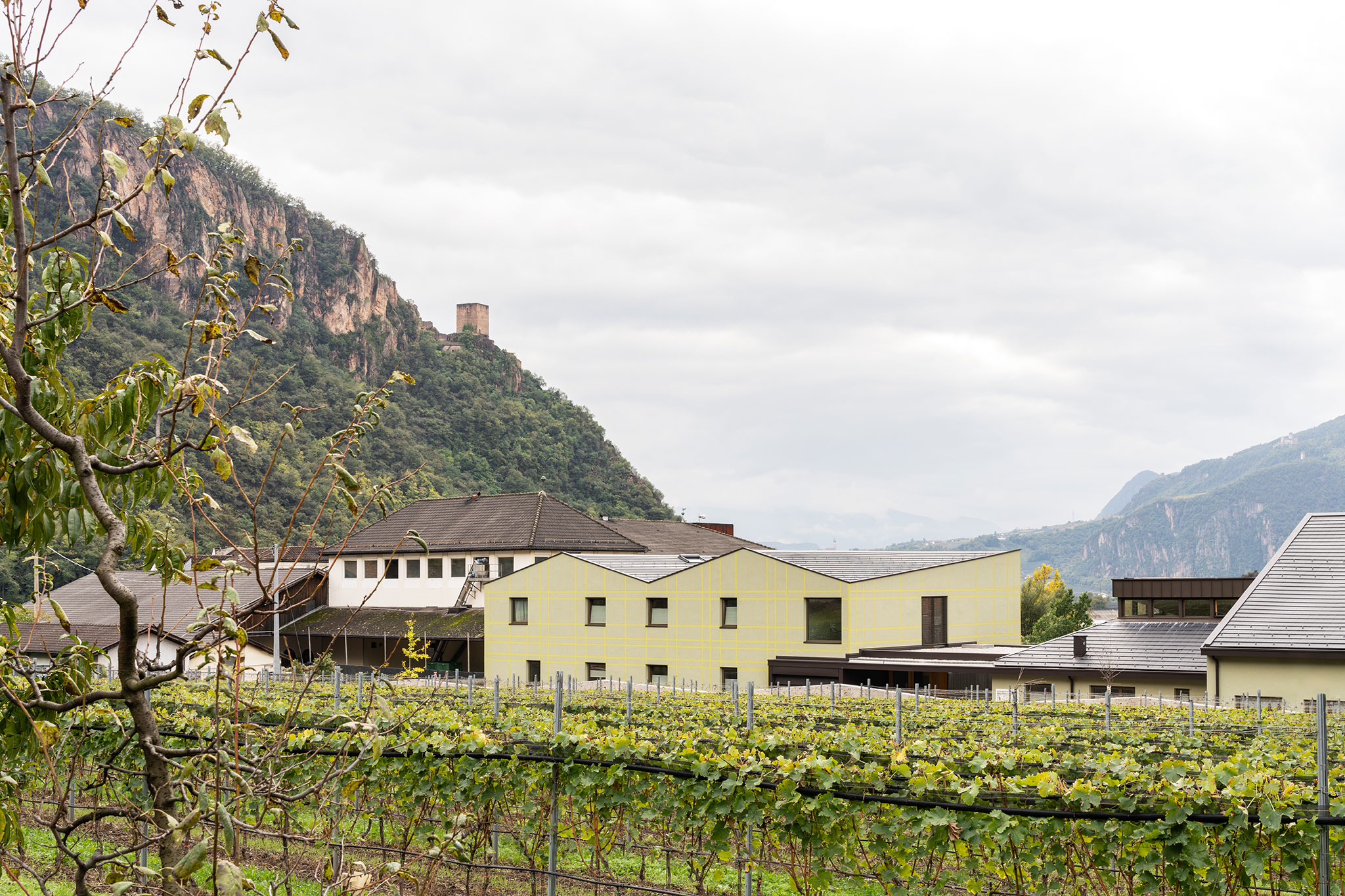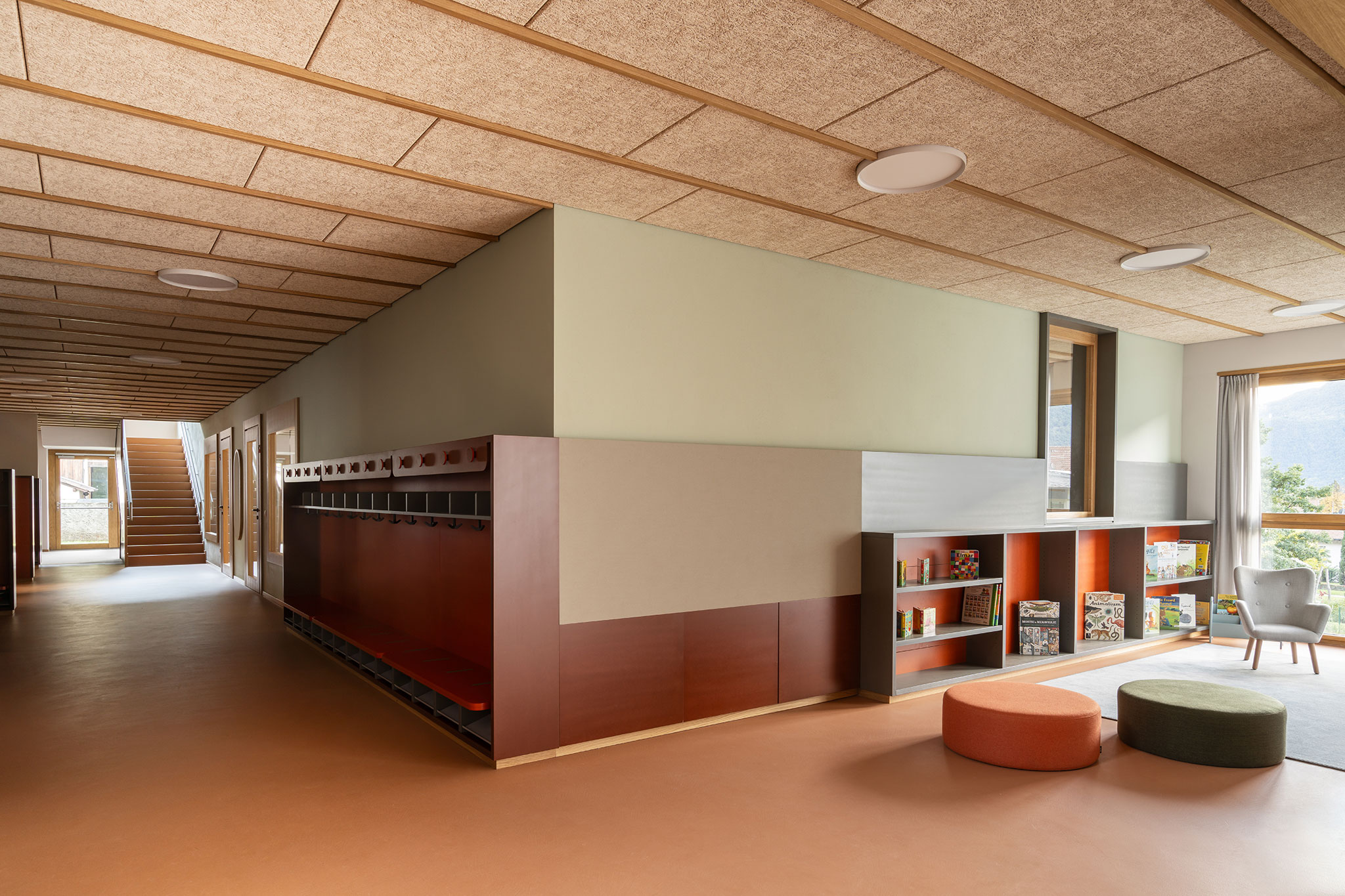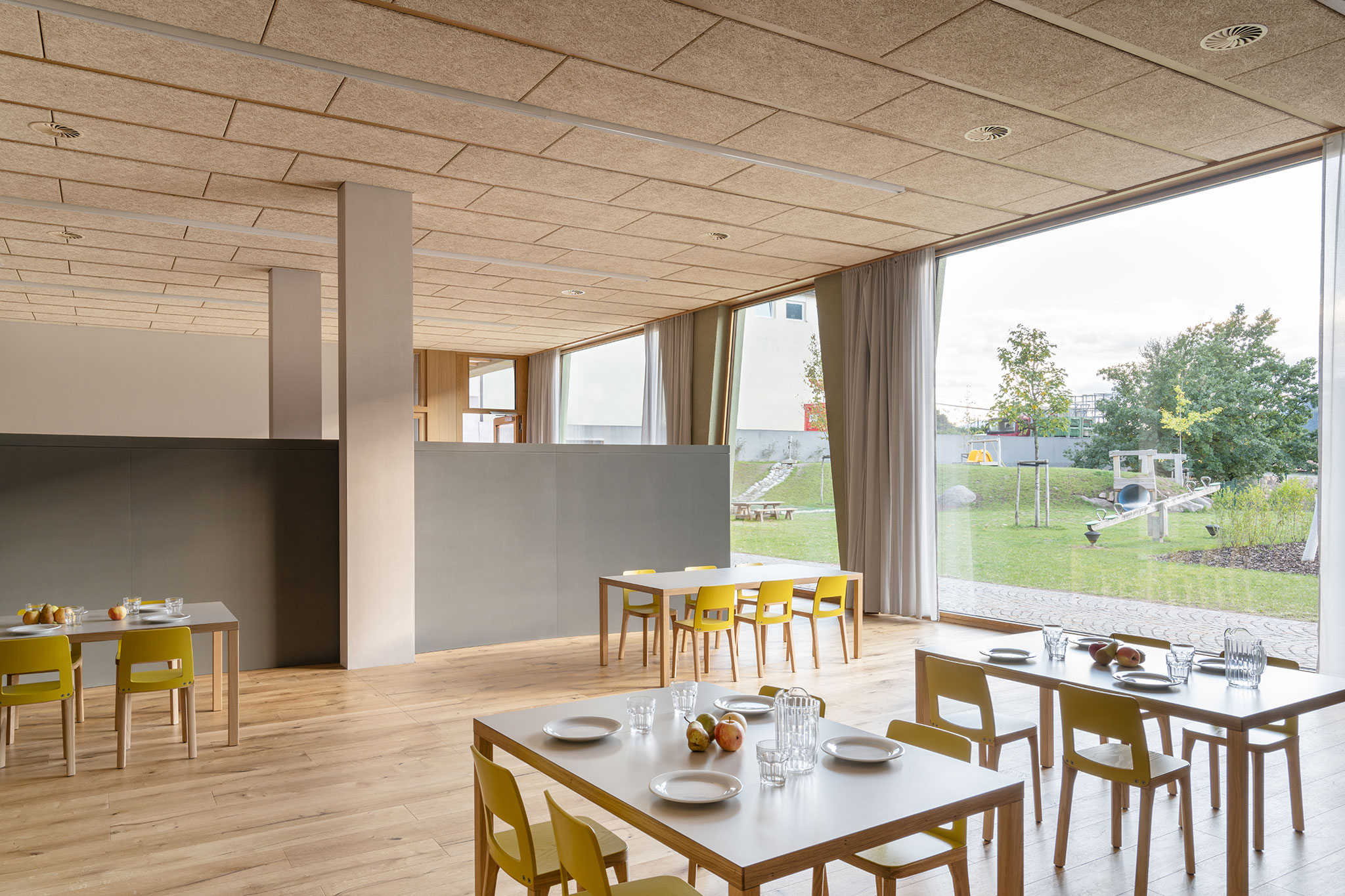The entire project is set against the wider landscape, creating landmarks and views of the historic church tower to the south, the steep mountainside to the north without forgetting the medieval profiles of Neuhaus Castle looking west.

Exterior, South elevation, New building and playground. Photograph by Marco Cappelletti.
With an economy of means approach, MoDusArchitects offers new ways in which the three different educational programs of the nursery, kindergarten and youth center could share fewer but more generous common spaces with each other and at the same time make them available to the community in general as necessary.
"The school owes its name to the building's plaster façade, which emulates the pattern of tartan cloth, a fabric that conveys a feeling of warmth and familiarity."
Sandy Attia, co-founder of MoDusArchitects together with Matteo Scagnol.
The two buildings (existing and new) overcome the 4 meter slope change from north to south of the site. The two separate entrances to the daycare and kindergarten are located on the upper ground floor level along the northern edge of the property, while the entrance to the Youth Center is located on the south side of the building on the lower.

Exterior view, North elevation. Photograph by Marco Cappelletti.
The Infant School (0-3 years) occupies the upper ground floor of the existing building, while the position of the Youth Center remains unchanged on the ground floor of the existing building.
The new wing houses the various functions (group activity rooms, nap room, reading area) of the 4-classroom kindergarten (100 children, ages 3-6) with the dining room and movement room/gym located in the ground floor level in relation to the outdoor playground.
This lower level is designed to create a common floor dedicated to the three programs, so that the small auditorium (capacity 50 people), the dining room and the gymnasium form a series of distinct rooms that can become part of the public domain for events . , school recitals, community meetings, etc.

Kindergarten, Ground Floor (L 00), Wardrobe and reading area. Furniture: Custom-made MDF wardrobe and bookcases - design MoDusArchitects - made by Gampenrieder srl; Noo.Ma pouf - mod. Folk pouf - Wide. Photograph by Marco Cappelletti.
Although connected in plan and section, the addition necessarily functions as an adjacent piece, semantically separate from the clumsy profiles of the existing school; The truncated, zigzag volume on trapezoidal legs is like a new neighbor that fits between the old school building and the large warehouse next door.
The rough surfaces of the plaster facades are etched with a two-tone green tartan pattern that works in conjunction with the large windows that gently sway across the southern facade in cue from the angled roof lines. With the windows inserted at the ground floor level, the trapezoidal wall cutouts become column supports that frame a loggia that mediates the fundamental indoor-outdoor movement between lunchtime and playtime. The school playground is contiguous with the city's public playground in continuous efforts to reinforce synergies, making the most of finite resources.
The interiors weave the disparate spaces of the existing structure and the new addition through a careful selection of robust materials and surface treatments. The custom-made furniture, distinguished by brick-red resin flooring and MDF design, creates a palette of warm tones for the closets and integrated reading and activity nooks found, for example, in the common areas of the kindergarten. Ceiling-mounted acoustic panels dotted with wooden profiles provide a soundscape capable of absorbing the noise levels of children as they move freely around the school in their conquest of space.

Kindergarten, Lower Ground Floor (L -01), Dining Hall with Playground View. Furniture: HUSSL table - mod. TC4Junior; HUSSL chair - mod. ST6J-20. Photograph by Marco Cappelletti.
Tartan School is a “ClimateHouse A” certified building; The existing school windows, walls and roof insulation were replaced to improve the thermal efficiency of the building envelope. In this way, the two structures had similar energy performance characteristics, allowing for greater flexibility in the connections between the two structures.
Tartan School is part of MoDusArchitects' decades-long work in educational spaces, with an archive of more than twenty projects in the field, whether completed buildings, projects in progress, competition proposals or publications on the topic. With an interdisciplinary approach, her work delves into the reciprocal relationship between learning and learning environments, examining how the fields of pedagogy and architecture can drive unexpected solutions to the traditional school building program.













































































